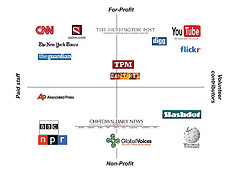As USC’s Annenberg School for Communication & Journalism looks for a new journalism director, Columbia’s Graduate Journalism School hired former Washington Post managing editor Steve Coll to lead. Though some have criticized Coll for taking a job sculpting tomorrow’s journalists having never tweeted once in his life, The New York Times’ David Carr wrote a positive appraisal of Coll in which he calls the Pulitzer-winner a Dumbledore to Columbia’s Hogwarts.
Carr, the Times’ media columnist, suggests that Twitter isn’t central to journalism (“my boss likes to point out that I tweet constantly but Twitter never sends me a check”). He also argues that Coll definitely has a knack for thinking ahead, evidenced by an early plan to equip reporters with portable cameras, which Carr made fun of at the time.
“I think the great digital journalism of our age has yet to be created,” Coll told Carr. “The cohort that is at Columbia now is the one that will be making the journalism that is going to shape our democracy; working on mining data sets, creating video that is not 2012, coming up with much more powerful ways of accruing and displaying information.”











